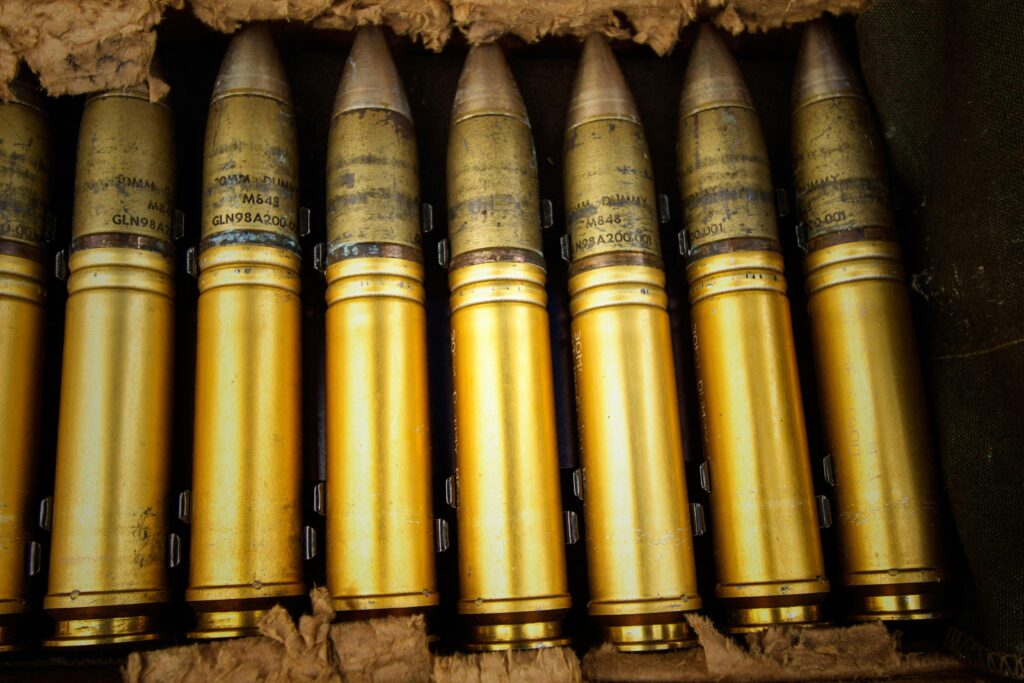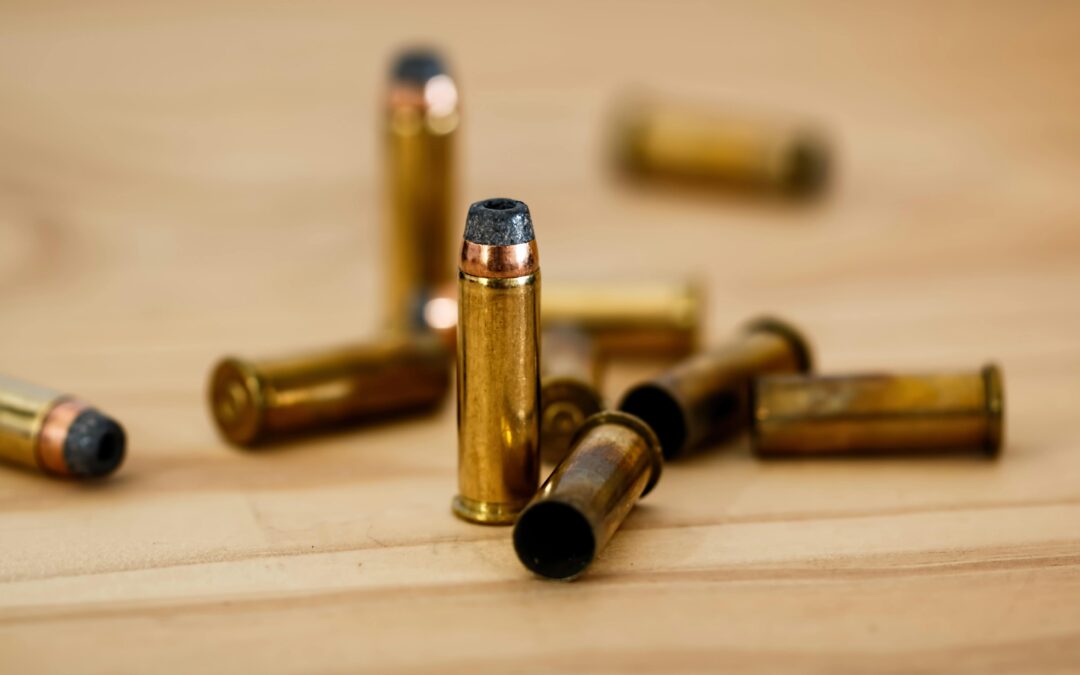What does the grain mean in ammo? If you’ve spent more than fifteen minutes in a gun store, you’ve probably seen it: two boxes of 9mm ammo sitting side by side. Identical brand. Identical caliber. But one box says “115 gr,” the other “147 gr.”
And suddenly you’re faced with the question:
What does “the grain” mean in ammo—and why does it matter?
Let’s dig in.
What Does the Grain Mean in Ammo & What Is Ammo Grain?
“Grain,” in the world of ammunition, doesn’t refer to corn or wheat or the kind of thing that ends up in your protein bar. It’s an old-school unit of measurement. In fact, one grain is equal to exactly 1/7,000th of a pound, or 0.0648 grams.
So when a box of ammo says “124 gr,” it’s telling you the weight of the bullet—just the projectile itself, not the casing, powder, or primer. Think of it like this:
- The cartridge is the entire round.
- The bullet is the part that leaves the barrel.
- The grain is how heavy that bullet is.
It’s not a marketing gimmick. It’s a legit measurement. And it actually matters.

Okay, But Why Does Bullet Weight Matter?
Here are some points to remember as you contemplate “what does the grain mean in ammo?”
1. Recoil
Lighter bullets (say, 115 grains in a 9mm) usually produce less recoil. That makes them easier to control, especially in rapid fire. Heavier bullets (like 147 grains) can give you more of that pushback, depending on your firearm and the load.
2. Velocity
Lighter bullets tend to be faster. The same amount of powder is pushing less weight, which usually means more speed. Great for flatter trajectories at shorter distances. Heavier bullets are slower—but they retain energy longer and often hit with more authority at the end of their path.
3. Trajectory
Ever thrown a wiffle ball? Now compare that to a baseball. Same wind. Totally different flight. Heavier bullets resist wind drift better, tend to drop more over distance, but also hold their momentum longer. If you’re shooting past 25 yards, that starts to matter.
4. Penetration & Expansion
This one depends on your target. Heavier bullets often penetrate deeper, especially through barriers. Lighter bullets may expand more quickly. It’s part of the calculus for self-defense ammo—how deep should it go, and how much damage should it do on the way?
A Practical Example: 9mm Ammo
Let’s break it down with America’s favorite caliber—9mm Luger. You’ll typically find it in three common grain weights:
- 115 grain – fast, snappy, low recoil. Great for range practice.
- 124 grain – the Goldilocks round. Balanced in speed, recoil, and performance.
- 147 grain – subsonic (usually), heavier, slower. Popular for suppressor use or shooters who want a little more push.
None of these are “better” than the others. But each has pros and cons depending on what you’re doing.
Shooting paper targets at 10 yards? Go light and fast.
Running suppressed? Heavier subsonics are your friend.
Carrying for defense? You’ll want something tested for expansion and penetration—often in the 124–147 gr range.
So, Higher Grain = Better Ammo?
Not exactly.
Some rounds are meant to expand, some to over-penetrate, some to stay stable through wind or glass.
Grain is just one variable.
More grain doesn’t automatically mean more damage.
It just means more weight—and that can be an advantage or a disadvantage depending on what you’re after.
Does Grain Affect Accuracy?
Yes—sort of.
Grain weight can affect how your firearm cycles, how it recoils, and how it prints on target. But whether 115 gr is more accurate than 124 gr really comes down to:
- Your firearm’s barrel length and rifling
- Your own shooting style and stance
- Whether the ammo and gun are well matched
Some guns love 115-grain FMJ and group beautifully. Others shoot tighter with heavier rounds. It’s worth experimenting with a few different grain weights to see what your setup likes best.
Also worth noting: accuracy is a human-involved equation. It’s not just the ammo’s fault.

What Grain Ammo Should I Use?
Let’s walk through a few scenarios:
For Range Practice
Go light. Lighter bullets are generally cheaper and easier on the wrist. 115 grain for 9mm, 55 grain for .223 Remington—whatever your caliber, the lighter end of the spectrum is usually fine for paper targets.
For Concealed Carry
Pick a tested self-defense round. Many of the top hollow-point loads fall in the mid-to-heavy range: 124 or 147 gr for 9mm, 180 gr for .40 S&W. Just make sure your gun cycles it reliably.
For Suppressed Shooting
Subsonic is key. You’ll want heavier bullets that stay below the speed of sound. Why? Less crack, more thump. 147 grain 9mm or 220 grain .300 BLK are popular subsonic choices.
For Hunting
Depends on your target. A 150-grain .308 might be great for deer. A 220-grain .30-06 might be better for elk. You’re matching energy, velocity, and bullet construction to your prey.
A Few Fun Grain Facts
- The term “grain” comes from the weight of a single barley corn—used as a measuring standard in the Middle Ages.
- A 7000-grain bullet would weigh a full pound. Not something you’d want to shoot… or carry.
- Grain is used to measure not just bullets, but powder charges, too. Though modern shooters typically refer to powder weight in grains only for handloads.
The Takeaway on “Grain” and its Importance
So…what does the grain mean in ammo? If there’s one takeaway, it’s this: grain matters, but it’s not everything.
It’s one piece of the ballistic puzzle—a useful number, yes, but not a magic one. Ammo selection is about context. About application. About what feels right in your gun, your hands, and your mission.
So experiment. Try different loads. See how your firearm performs.
And next time you see two boxes of the same caliber side by side, you’ll know what those little numbers actually mean—and how to pick the one that works best for you.
Visit Maui Ammo and Gun Supply for all your fire arm related needs.


Recent Comments